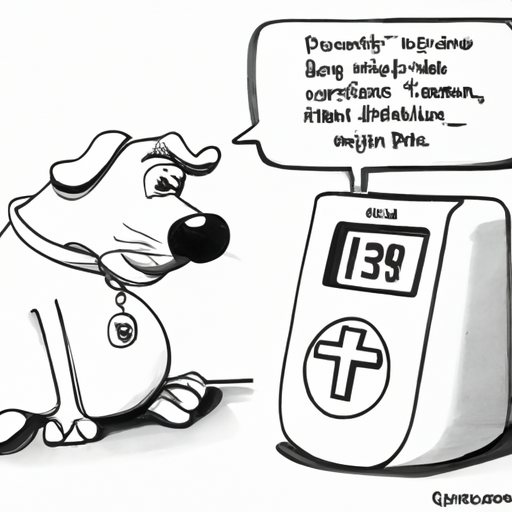Diabetes is not only a human condition. Your furry friend can also fall prey to this disease. It’s important to know what to look for and how to best care for your pet. Let’s delve into the signs of dog diabetes.
1. Understanding Dog Diabetes
Diabetes in dogs is a complex disease caused by either a lack of the hormone insulin or an inadequate response to insulin. It involves the metabolism of carbohydrates, fats, and proteins. There are two types of diabetes that can affect your dog:
- Diabetes Mellitus: This is similar to type 1 diabetes in humans. Dogs with this type of diabetes are insulin-dependent.
- Diabetes Insipidus: This is a very rare form, where the dog’s body doesn’t properly conserve water.
2. Symptoms of Dog Diabetes
Your dog cannot verbally tell you when they are feeling unwell. Therefore, it’s crucial to pay attention to their behavior and physical condition. Here are some of the symptoms that can indicate diabetes in your dog:
- Frequent urination
- Increased thirst
- Weight loss despite normal or increased eating
- Cloudy eyes
- Chronic or recurring infections
3. Risk Factors for Dog Diabetes
Certain factors can increase the risk of your dog developing diabetes. These include:
- Age: Dogs older than seven are more likely to develop diabetes.
- Gender: Female dogs are twice as likely to be diabetic.
- Obesity: Overweight dogs have a higher risk of developing diabetes.
- Breed: Certain breeds are more predisposed to diabetes.
| Breeds More Likely to Develop Diabetes |
|---|
| Samoyeds |
| Miniature Schnauzers |
| Dachshunds |
| Poodles |
| Alaskan Malamutes |
| Keeshonds |
4. Diagnosing Dog Diabetes
If you notice any of the above symptoms, take your dog to the vet for a check-up. Your vet will perform a series of tests, including blood tests and urinalysis, to confirm the diagnosis.
5. Treating Dog Diabetes
While diabetes is a serious condition, it’s treatable. Your vet will develop a treatment plan tailored to your dog’s needs. This may include:
- Insulin injections
- A healthy diet
- Regular exercise
6. Caring for a Diabetic Dog
As a caregiver, there are several things you can do to support your diabetic dog:
- Follow the diet plan prescribed by your vet.
- Monitor your dog’s blood sugar regularly.
- Administer insulin as prescribed.
- Regular check-ups with your vet.
7. The Prognosis for Dog Diabetes
With proper care and treatment, a dog with diabetes can live a normal, happy life. Regular vet visits and careful monitoring of your dog’s condition are key to managing this disease.
8. FAQs
What is the most common type of diabetes in dogs?
Diabetes Mellitus is the most common type of diabetes in dogs.
Can diet and exercise help prevent diabetes in dogs?
A balanced diet and regular exercise can help maintain a healthy weight in your dog and reduce the risk of diabetes.
Is dog diabetes curable?
While there is currently no cure for diabetes, it can be managed with proper treatment and care.
Can dogs live a normal life with diabetes?
Yes, with the right care and treatment, dogs with diabetes can live a normal, happy life.
In conclusion, as a loving and caring pet owner, understanding the signs of dog diabetes is crucial. Early detection, prompt treatment, and careful management can ensure your furry friend lives a full and happy life, despite their condition.



